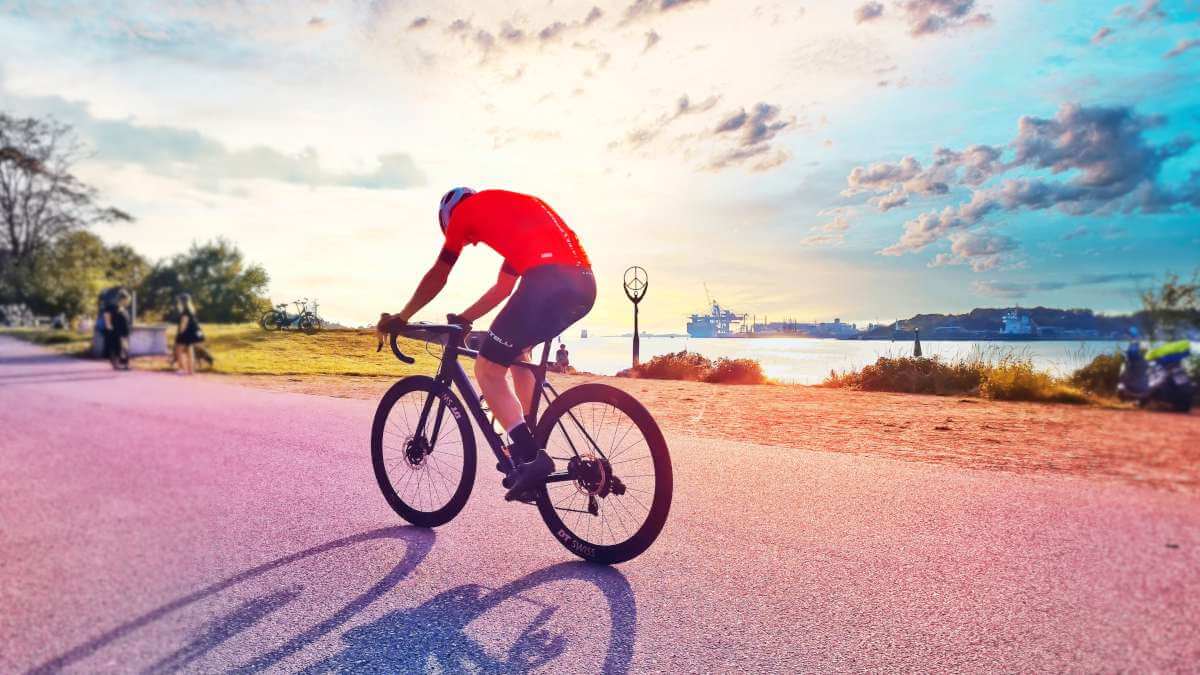A well-structured bike training for Ironman is important in maximizing your overall performance in the race. Usually, it’s the biggest part of your Ironman training, as compared to the swim and run legs; and, it can dramatically affect your running performance.
With this in mind, all triathletes should take the cycling component very seriously! To that end, we’ve compiled a few best practices that will help you build on your Ironman bike training.
How to hone your bike training for Ironman?
1. Find the perfect bike position for you
Admittedly, the first and most important thing you need to do is find the ideal position for you on your bike. Consider that, on one hand, not all athletes can remain in the most aerodynamic position for many hours. On the other hand, an extreme upright position will result in high air resistance.
After the bike has been fitted, you should seek the ideal relationship between aerodynamics and comfort. Make sure to keep in mind all those factors that can influence this relationship; like, the distance of the triathlon race, your flexibility, your anatomy, but also the bike itself.
2. Undergo performance tests on an ongoing basis
Without a doubt, evaluation — and reevaluation — is a crucial part of the training process. First, by evaluating you, your coach can delimit your strength and calculate heart rate zones, to customize your training. Second, your weaknesses are identified only when your training is focused on them; and you do want to know your weaknesses! Third, along with your coach, you can record your adaptations deriving from the training plan, by re-evaluating your performance frequently.
3. Personalize your training
A fundamental practice for the best possible performance is, by all means, a personalized, well-structured training plan. To be honest, many athletes have dilemmas, such as “high volume training or intensity training”, “threshold training or polarized training“, “brick training or not“.
However, the most important thing is to not pick one over the other; but rather how your training will be structured to suit your level and your goals, as an athlete. Remember that there’s no such thing as the best or the worst training plan; there’s only a suitable or unsuitable training plan for you.
4. Don’t forget strength training
Bear in mind that modern studies point to the importance of strength training in triathletes, among other things. Danish professor Per Aagard and his colleagues have found an up to 8% improvement in the performance of high-level triathletes ; that is, when they included strength training in their program. Strength training makes athletes more energy-efficient, and it also minimizes the chances of muscle injuries. Moreover, a strong musculoskeletal system can help enhance your posture; especially after cycling, when you jump into the Ironman Marathon distance.
5. Fuel your body
The American College of Sports Medicine recommends 30 to 60 grams of carbohydrate per hour of exercise; yet, few athletes understand the reason for this amount. The modern energy gels/drinks contain a mix of carbohydrates, so you can digest up to 90 grams/hour. The issue here isn’t your muscles; it’s your intestines — transporting glucose into your bloodstream. It’s very important to find the right amount for you, and your needs; something that should be done during the training period.
Furthermore, you should find the ideal product for each source of calories. In addition to your energy intake, it’s important to reabsorb the minerals lost through sweat — such as magnesium and sodium — as well.
Loving our content?
Be the first to know when something new comes out!
Find a professional coach
Apart from the best practices we’ve touched on in this article, there are many other parameters that play an important role in optimizing your bike training for Ironman. Notwithstanding, we’ve got a last one — but certainly not the least — to mention, and it’s none other than to find a professional coach. If anything, a coach will safely guide you towards reaching your athletic goals! ✌
